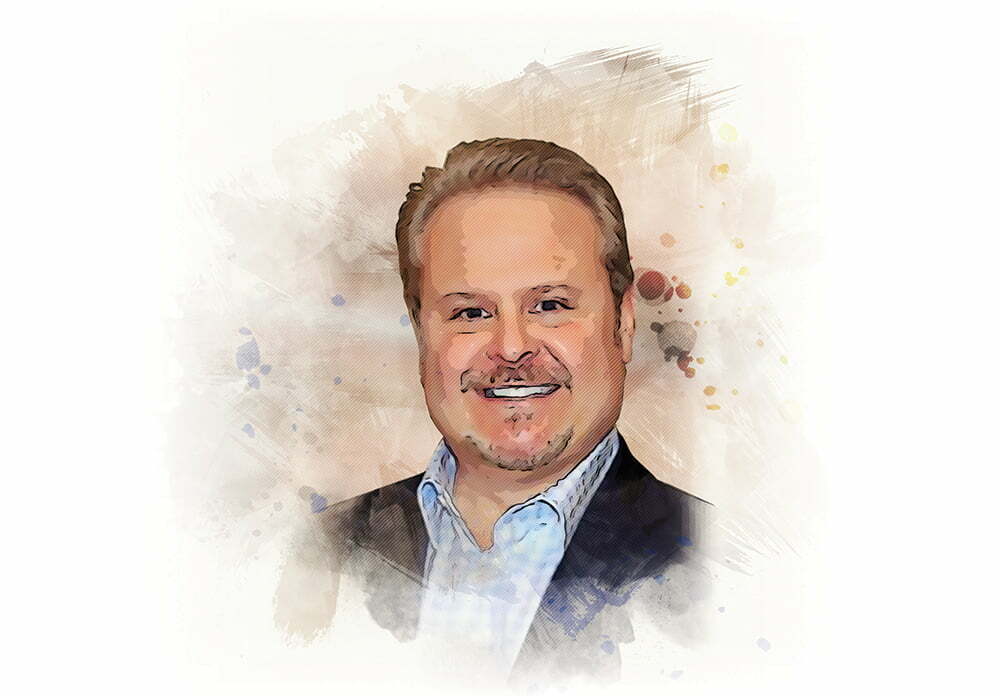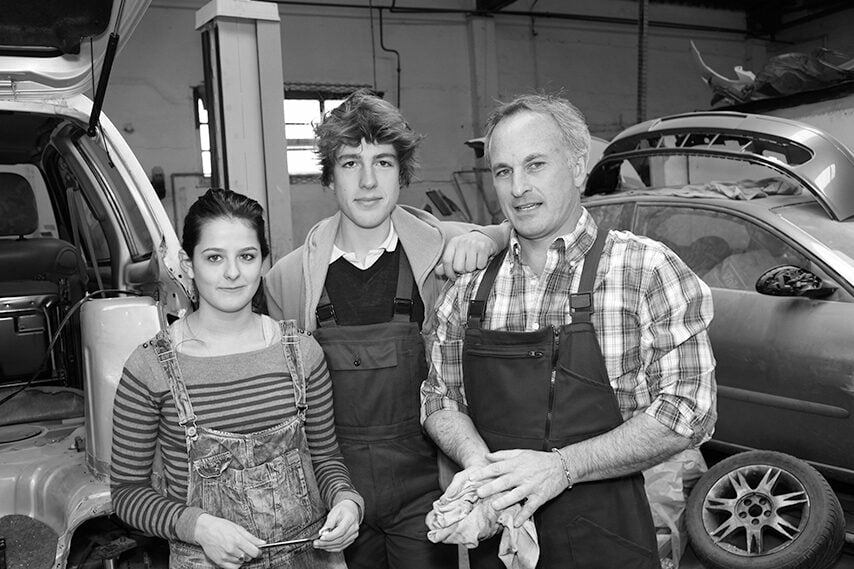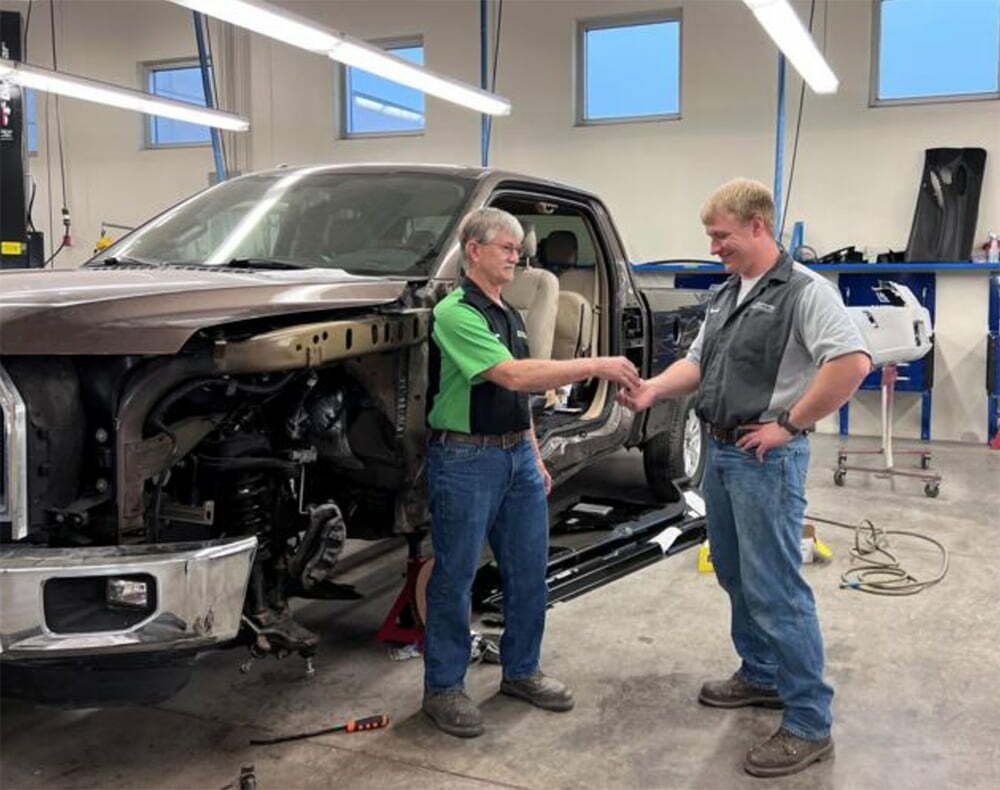For generational body shop business owners who refuse to hire and train Millennials, it’s probably time to reconsider.
Why It Matters
The old era of collision center management is over and the Millennial takeover has begun. Millennials (born between 1980 and 1995) will comprise 75% of the global workforce by 2025†. About 80 million Millennials dominate the U.S. workforce today.
The Expert
Mike Lanza is the Manager of Business Consulting Services for Sherwin-Williams Automotive Finishes. With over 33 years of automotive experience managing and owning both independents and MSO’s, he advises the industry in recruiting, training, technical, sales, and all central services.

Major workforce changes have been happening for a while now. Have most collision shops seen this as urgent?
Mike: As an industry, we’ve had this conversation year after year, and body shops “get it” but they don’t get it. They understand the issue but they’re paralyzed as to what to do about it. The forecast is drastic in how the demographic impacts business, but it’s not as drastic as a lot of people think it is.
Everyone gravitates to the negative perceptions of Millennials, but the younger generation is very comfortable with remote work, cloud-based tech, and mobile apps. The good side of this is that as commerce and our world change, technology is a huge part of it. It’s the direction the world is headed, and it’s the way the autobody industry already is for our forward-thinking users.
What is the biggest hurdle now for traditional body shop owners?
Mike: If shops look at hiring and training Millennials as a great opportunity to take their business to the next level, then it’s more easily adaptable. But the long-standing generational business owners who want to operate the way they always have—needing their workers on-site, in person, Monday to Friday, performing the same tasks for 8 hours a day—that’s just not going to continue to work. The larger MSOs (multi-store body shops) have started adapting to this and I think it’s going to be key to them being successful because it’s how they’ve grown their companies.

You recently attended the International Bodyshop Industry Symposium (IBIS). Is the trend the same globally?
Mike: There is a huge cultural divide between generational body shop owners and the new companies that are starting to adapt. It was very positive and gratifying to see that, on the international level, traditional body shops are starting to endear themselves to the idea. I’ve also seen that the “super-regional” MSOs that have anywhere from 40-150 to 1500 stores are adopting the trend because they have a large footprint in the marketplace, so they can invest in recruiting, tracking, and training new workers.
Whereas smaller body shops will see the potential in hiring a youngster, but they’re also weighing the risk of lost ROI from someone who’s unskilled. The question I always get from those shops is: “If they don’t bring me value from day one, then how do I pay that person?” The reality of it is: How can you afford not to? It’s a cost of doing business.
Five or ten years ago, you may have had more time to transition. But 2025 is upon us, so drastic action has to happen now. Otherwise, you’ll be left behind. Hence why we are now seeing more smaller MSOs (3-5 stores) either looking to sell or selling their businesses because they’ve struggled to make the transition.
“For a collision center to survive, everyone needs to act and move as one unit – at every level. Otherwise, employees will continue to leave.”
Can resistance to hiring and training Millennials doom a body shop’s business?
Mike: Yes, I think it can. When we look at Millennials’ working style, they like to collaborate, they don’t want to work a full 9-to-5 shift, they want a flexible work schedule. Right away, some body shop owners will object: “This is my business, my name is on the building, so my workers are going to do things my way.” And I understand all of that, I get it. But this is the business we’re in, and this is this generation’s talent pool. So stop looking at it negatively.
They’re simply telling you “This is how our generation has been trained in school to work.” They work together as teams, not in silos, so they need cross-pollination to understand how things work on both sides of the desk in order to thrive, which goes against the entire structure of our industry. Typically, if you’re an Estimator then you’re an Estimator; if you’re a Bodyman then you’re a Bodyman, and that’s it.
Body shop owners have to open their minds to the way Millennials think. Figure out how to take their skill set and make it work. Place them in different areas of your business to see where they flourish, then develop those skills to make them most profitable for themselves and for you. Otherwise, those employees will leave and turnover will remain high. I tell shop owners every day: Employees don’t quit companies, they quit management.

Do you expect that small body shops will adapt before it’s too late?
Mike: For the smaller companies, I don’t know whether it’s that they don’t have the appetite for it or that the pool of candidates isn’t sufficient, or simply that they don’t know how to do it. But there is a mass exodus of workers as of late.
Five years ago, scanning and calibrating Advanced Driver Assistance Systems (ADAS) sensors didn’t exist in a body shop. Now it’s a full-time job, and that will continue to become more prevalent. Every car will have that level of complexity, so Millennials are the types of workers we need in the industry. But narrow-mindedness will keep certain body shop owners stuck in the “we’re fixing cars” mindset of the past. For some people, it’s a mental shift that they can’t seem to make—and, honestly, if they can’t then it’s probably time for them to move on.
How can body shops leverage social media to recruit new talent?
Mike: If you walk into any big-box store or onto a car sales lot, you see almost entirely young employees. It’s a paycheck for them, but they may not recognize their own potential. Most could possess an aptitude for front office operations, estimating, parts management, scanning and calibrating, body work, painting— instead of working in retail. They just don’t know what they don’t know. So my focus has always been: How do we let them know, how do we attract them to the industry?
It’s all social media, it’s all algorithms. If you’re searching online for rims for your car from your phone, then you start getting ads for rims, right? We need to do the same in the industry. To generate interest, perhaps target people on social media within a 50-mile radius of your shop who may have searched car-related items with a YouTube video: “Have you ever considered a career in the automotive industry? Are you interested? Call us.” This is the direction this industry needs to be headed.
“For this industry to grow, women are an asset that must be capitalized on. This industry is open to literally anyone.”
Female-led body shops seem to be leveraging the shift well.
Mike: Definitely. You’re seeing a lot of females within the industry not only at the front of the office but also on the production floor. I follow quite a few all-female auto body shops on social media. I think it’s fantastic. A few years ago, I was tasked with assembling an apprentice program and part of it involved tackling how to get women like them to become ambassadors for the industry.
I think it’s two-fold: How do we attract female workers and what steps do we take to make sure they’re fulfilled in their careers? Those things are important now, but the industry’s communication with women has always been poor. So this is a complete paradigm shift from the way collision centers have been run for the past 75-80 years.
It’s completely upending and expanding the three core Bodyman, Painter, and Estimator roles as we’ve known them—now there are fifteen roles. One MSO tells me they are acquiring an average of two to three shops per week. On their social media, you’ll see quite a few women in leadership roles at their stores. For this industry to grow, women are an asset that must be capitalized on. This industry is open to literally anyone, not just your stereotypical guy who changed the oil with his dad in the driveway as a kid.
So, the takeaway is that there are no shortcuts to a shop’s survival with the Millennial workforce?
Mike: Correct. Nowadays, shops that advertise six-figure earning potential to recruit talent are only attracting current workers. They’re not developing new workers. They’re poaching from their competitors, which only drives up the cost of labor for everyone, and that can’t last long-term.
Even if they don’t like cars, this is a valid industry that Millennials can learn a portion of, be successful at, and earn a very good living from—with the right training.
See also Set Up New Employees for Success: The Importance of Onboarding
† DELOITTE MILLENNIAL SURVEY, JANUARY 2014
